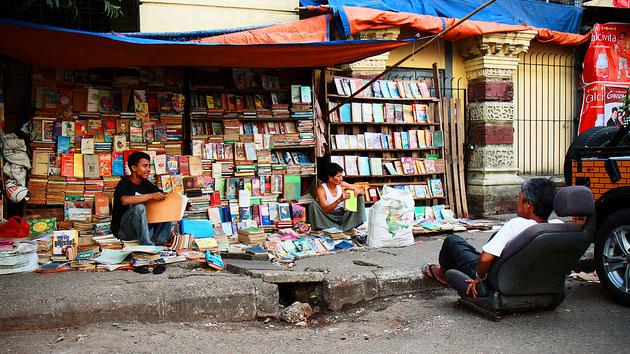posted on
03 Nov 2015
Signs of a changing literary landscape in Myanmar

From 1963 to 2012, in an attempt to force ‘unity within diversity’, Burmese was declared the sole language of Burma, to be used everywhere from schools and government departments, to road signs and poetry. Ethnic nationality languages were in effect criminalised. Educators were imprisoned for teaching regional languages, shopkeepers were fined for displaying non-Burmese signs. Teenagers wearing t-shirts tagged with words from their own language were picked off the street, held in police stations and stripped.
Such a policy had an inevitably ruinous effect on the creative literature of these communities, though there does seem to be some confusion among the ethnic writers themselves as to what the official government policy in publishing ethnic language works was. Some contend that, at first, all publications in ethnic languages were banned. Others argue that, later, non-political works could be written, so long as they were translated into the Burmese language first for the benefit of the censorship board. Again, a few say that cultural works in the ethnic languages could bypass the censorship board altogether, so long as they were printed on presses owned by religious institutions and marked on the title page with ‘for internal distribution’. This confusion is not surprising given the rather haphazard trickling down of ever-changing laws from the state to the officials on the ground. An environment of confusion and uncertainty benefited the military junta where people would be wary of testing the boundaries for fear of the consequences.
The abolition of pre-publication censorship in 2012 could be argued to have had an immediate, if limited, benefit to Burmese language literature. It is certainly quicker for publishers to bring out books now, and in more copies; writers are finding space for previously taboo topics, though literature itself is far from free. In ethnic nationality language literature, there is no quick fix.
Fortunately, despite the challenges, writers from many ethnic national communities have emerged over the years. Joel Ling, an ethnic Chin from Burma’s least developed eastern state, has written what is probably the first novel in the Lai Hakha language, The Lonely Land (2012), and used the Chin refugee community in America to translate the book into English. Daw Mie Lay Mon, the most well-known ethnic Mon writer from Burma’s eastern border with Thailand is finishing the first collection of contemporary Mon language short stories. In Kachin State, Rev. Dr. N-Gan Tang Gun is the author of several Jingphaw language non-fiction works on the culture and history of the Kachin people dating back to the 1980s, while Wawn Awng is establishing his reputation as Kachin’s leading poet with several translated pieces featured on the Poetry International website.
An anthology with new ethnic Burmese writing was released on 27 September 2015, as a culmination of the British Council's Hidden Words – Hidden Worlds project. The English translation is set for publication in 2017.
This is an edited version of the original article - read full article
© 2015 British Council
Image: 'Writers are finding space for previously taboo topics.' Photo © Stefan Munder, licensed under CC BY 2.0 and adapted from the original.
Similar content
posted on
07 Jan 2018
posted on
25 Apr 2023
posted on
14 Jun 2013
posted on
13 Feb 2017
posted on
26 Oct 2012
posted on
28 Dec 2010





